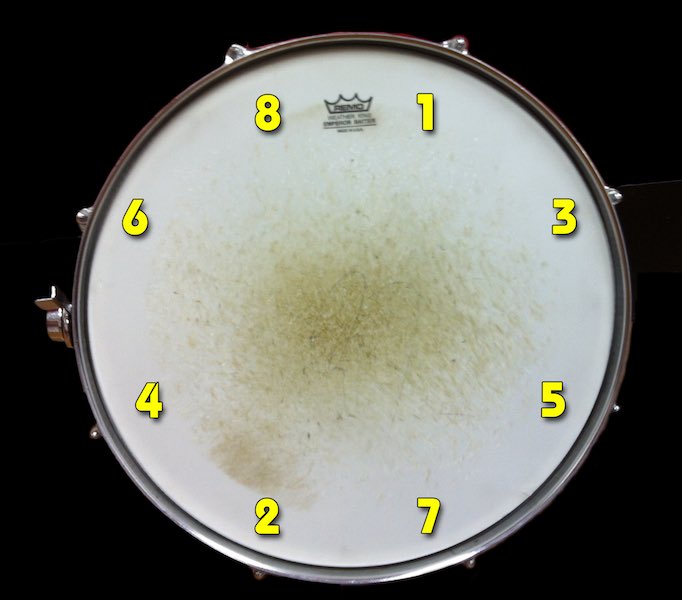- in Production by Bobby Owsinski
A Recording Engineer’s Guide To Drum Tuning
Unless you’re already a drummer, you probably aren’t aware of the proper way to tune a drum kit. The drum tuning process is actually quite simple, but it does take some time and experimentation. The idea is to make sure that all of the tension rods that hold the head on have the same tension at each lug. What you want is for the pitch to sound the same at each lug as you tap near it.

Here’s an excerpt from the Recording Engineer’s Handbook that shows how it’s done:
- Hit the head an inch in front of each lug of the drum. Is the sound the same at each lug?
- Using a drum key, adjust the tension so that the sound is the same at each lug. Is the sound the same at each lug now?
- When the pitch (the tension) is the same at each lug, then hit the drum in the center. It should have a nice, even decay.
- Using the same technique, tune the bottom head to the same pitch as the top head. What does the drum sound like now when you hit it in the center? Is the tone even? Is the decay even? Are there any overtones?
TIP: For faster and more even tuning, adjust the lugs in a crisscross pattern, as shown in the above graphic.
Tuning between the Top and Bottom Heads
There are three drum tuning possibilities for drums that use a top and bottom head:
- The top and bottom heads are tuned to the same pitch. This provides the purest tone and the longest sustain.
- The bottom head is tuned lower than the top. This provides a deep sound with a lot of sustain as well as a pitch drop or “growl.”
- The bottom is tuned higher (tighter) than the top. This also produces a pitch-drop sound, although it’s a bit shallower and has a shorter sustain.
When the drum is first tuned, both heads are tuned to the same pitch. After the correct pitch for the top head is selected, tune the bottom head anywhere from a pitch interval of a third to a fifth away from the top head if that’s the sound you’re looking for.
Tuning between Drums
Many drummers prefer to tune drums a fourth away from each other, while others will tune drums as far away from each other as they can. The limiting factor is how low you can tune the floor tom before it begins to sound bad or too close to the kick drum.
- Start with your smallest tom and tune the top head close to the pitch where it resonates well, being careful not to tune it too low.
- To tune in fourths, go to the next largest drum and sing the “Wedding March,” or “Here comes the bride.” The interval between “Here” and “comes” is a fourth, so “comes” would be the tuning pitch of the high tom, and “Here” would be the pitch of the lower.
- Continue tuning the rest of the toms using the same method.
TIP: When drums are close to the same size, tune the smaller one higher and the larger one lower.
You can read more from The Recording Engineer’s Handbook and my other books on the excerpt section of bobbyowsinski.com.

